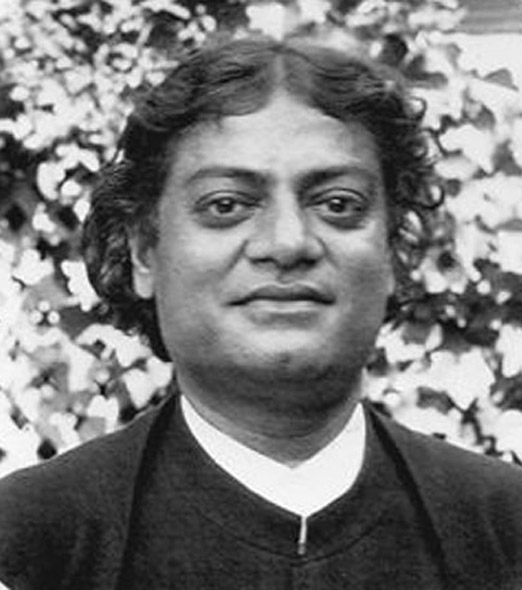
Born in 1863, Vivekananda was only 18 years of age when he first met Ramakrishna. Vivekananda was then a young Indian of his time: torn between, on one hand, the attractions of progressive Western civilization and, on the other, the attractions of the ancestral civilisation of India. And, torn between the desire to fight for social reforms and to study history as part of this movement, and the need to develop an inner life based on the tenet that eternity is the only reality.
Vivekananda was preoccupied with the question of the existence of God, and was looking for someone who could bear witness to His existence. He went from person to person, asking “Have you seen God?” His quest finally came to an end when he met Ramakrishna, who replied: “Yes, I see Him just as I see you, but much more intensely”, and when, by a simple physical touch, Ramakrishna transmitted his vision to him.
From then on, Vivekananda never left Ramakrishna’s side, and all the more so because Ramakrishna had instantly recognised in Vivekananda the disciple he was waiting for.
Before leaving this world, Ramakrishna conferred on Vivekananda the responsibility for Ramakrishna’s disciples. In the years that followed Ramakrishna’s departure, Vivekananda lived the life of a wandering monk, crossing all of India and living off of the kindness and generosity of strangers. This phase of his life developed his spiritual consciousness, but also expanded his awareness of the social poverty in which his Indian brothers lived. He drew several conclusions from these experiences, which can be summarised as follows: first, one cannot develop develop one’s spiritual power while living in material poverty–it is therefore necessary to improve social conditions for the poor. At the same time, material prosperity, which is the great strength of the West, only becomes real prosperity when it is subordinate to spiritual prosperity–it is therefore necessary to work towards the spiritual elevation of all of humanity.
These became Swami Vivekananda’s goals from then on, and when he learned that, during the upcoming Chicago Universal Exhibition (in 1893) a World Parliament of Religions was to be held, he saw it as an opportunity to work towards them. His appearances at this event made such an impression that he subsequently received numerous invitations to deliver lectures in the United States. Vivekananda also travelled to Europe later on, staying in France, Switzerland, England, Germany, and Holland, and travelling by train from Paris to Istanbul on his return trip to India.
The two pillars of the Ramakrishna Mission had thus been established: education for social improvement and spiritual elevation for East, as well as West.
Upon his return to India, Swami Vivekananda, along with other disciples of Ramakrishna, established the Ramakrishna Mission, an institution dedicated to fulfilling these two goals.
Swami Vivekananda left this world on 4 July 1902.



